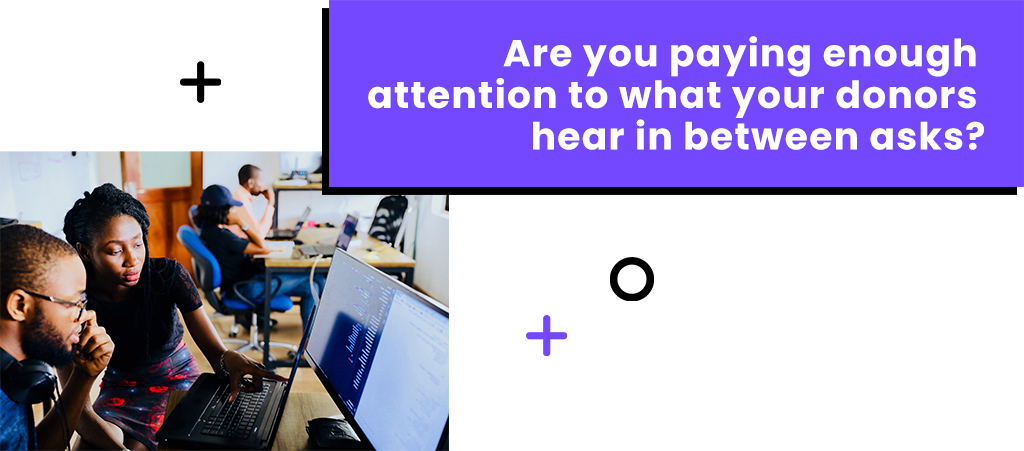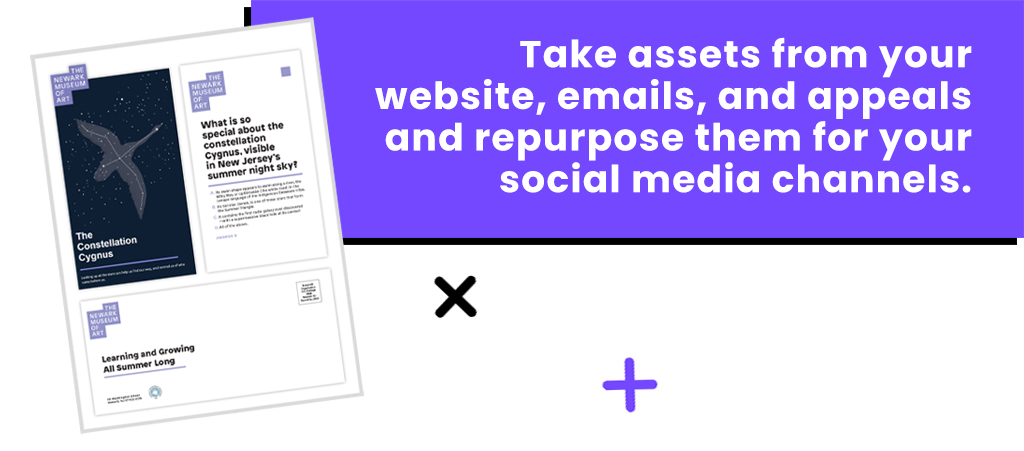How are you adjusting to the new normal? When the coronavirus pandemic hit, many of us were expecting things to eventually go back to the way they were. But that has not been the case in our industry. At least not in full. And the lessons fundraisers learned in 2021 will guide our strategies going forward.
Last year was all about flexibility in the wake of uncertainty surrounding the pandemic. We talked a lot about the importance of digital-first fundraising strategies and hosting online events.
And the lessons we learned back in 2020 still apply! But we’ve come a long way since then. Yet many fundraisers are still trying to figure out the best way to engage audiences, raise more money, and make the world a better place while adjusting to the new normal of our world and the nonprofit sector.
Many of us expected 2021 to be the year of getting back to basics. And in some ways, that’s true! But the lessons fundraisers learned in 2021 were about how to focus on the fundamentals, while adjusting to the new challenges we face.

1. Be thoughtful with non-ask communications.
Remember last year when we suggested sending your donors some non-ask communications to keep them engaged and let them know you were thinking about them during these challenging times?
Well, it’s still important to let donors know you’re thinking about them. And not just when it’s time to give!
Focusing on what donors are hearing in between appeals is one of the most important lessons fundraisers learned in 2021. So do an audit of all the messages you send donors during the year and see where you can work in more touches that don’t make an ask!
As usual, your data can help you! Treat your donors like your friends and send them a card on their birthday. And reach out to acknowledge the anniversary of a long-time donors first gift.
But don’t stop there! Your non ask communications can encourage donors to engage with your organization in ways other than donating.
Send donors a short survey once or twice a year. Let them know their opinions are important and you value their feedback. Ask questions about the donor themselves to gain new data points to use in your personalization efforts. Or ask them what they would do to improve your programs, activities, or outreach.
READ MORE: Why your nonprofit should be using donor surveys.

2. Secure stable fundraising.
The last two years have been a whirlwind. There’s still new information coming out about the coronavirus and how we can expect the world to work going forward. And with so much up in the air, it can be nice to find a little stability.
Charitable giving has actually been on the rise since the pandemic broke out. In fact, there was a 5.1% increase in overall giving from 2019 to 2020, according to Giving USA.
But that’s not a guarantee that things will stay that way. And there are two ways your nonprofit can build a bit of a safety net.
Make it monthly!
The first is by starting, building, or growing your monthly giving program. Monthly giving programs help level some of the peaks and valleys nonprofits see in giving throughout the year.
So, at the least, make sure there is a check box or dropdown menu option on your online giving page to “make it monthly.” This is a crucial first step if you haven’t explored monthly giving before.
You can build up your monthly giving program once you’ve covered the basics. This can include a special communications track for current monthly donors, and another for donors you are targeting to join your monthly giving program.
Cultivate major donors.
The second lesson fundraisers learned in 2021 when it comes to stability is to focus on their major donor outreach. These donors show immense faith in your nonprofit and your mission with their generous support. So, make sure they understand how important they are!
These are the donors who are going to stick around when things get tough. They’re also your candidates for planned giving and legacy gifts, a reliable source of fundraising revenue that will benefit you years down the road.
So, make sure you are setting time aside to focus on major donor cultivation. Start by making yourself a promise.
By the end of the year, you will have multiple touches and stronger relationships with over 50 major donors! This will go a long way towards retaining this very important group and providing some fundraising stability for the future!
READ MORE: Building monthly giving into your fundraising strategy.

3. Share it on social.
Your messages need to reach donors where they are already at. And these days, almost everyone has some form of social media! So, improving social outreach became a priority when nonprofits were looking for ways to diversify their messaging after the pandemic hit.
But many fundraisers were left scratching their heads, unsure of how to build an engaging social strategy.
Well, one of the lessons fundraisers learned in 2021 was that they already have more content than they think!
And many of your current assets can be repurposed for social media.
So, take the stories you tell in your appeals and break them down into small, digestible chunks to share on your social networks. Every story has a beginning, middle, and end. So, every story you tell can be picked apart and used for a series of posts.
And remember to be strategic with the photos you share on social media! A picture can be worth 1,000 words. But not every picture is worth 1,000 words!
Share photos of people, not things. All the images you post should tell a story, evoke a response, and inspire donors to act. And don’t forget to include a caption that lets your followers know there is still much work to be done!
You can extend your event communications in your social outreach. Post a gallery of images to follow up after an event. Or save some event photos for next year and post them leading up to the big day to generate excitement!
READ MORE: Repurposing assets for your nonprofit’s social media outreach.
4. Be mission focused.
Your nonprofit’s mission is as important as ever. Did you adjust some of your messaging in 2020 and 2021 to focus on urgent needs relating to the pandemic? Or maybe the nature of your nonprofit’s work has evolved over time?
Either way, getting back to the basics and being mission-focused was a key lesson fundraisers learned in 2021.
So, ask yourself the all-important question, why?
Why does your organization exist? Why is your work important? Why are people counting on your organization? And why should someone support you?
Your donors will care more about stories that answer why than a list of details about your programs and initiatives. We’re too often tempted to talk about how we’re trying to achieve our goals, rather than why your donors should care and what they can do about it.

5. Be donor centric.
But another important lesson fundraisers learned in 2021 was to think differently about who.
Traditionally, fundraising appeals tell stories focused on the people an organization supports.
Yes, your nonprofit’s current activities and the difference it makes in someone’s life is still important. But many nonprofits are finding success by making the focus of who their donors instead.
Donor-centric messages are being proven more effective in modern fundraising. And it starts with thinking about how donors see themselves in relation to your organization.








